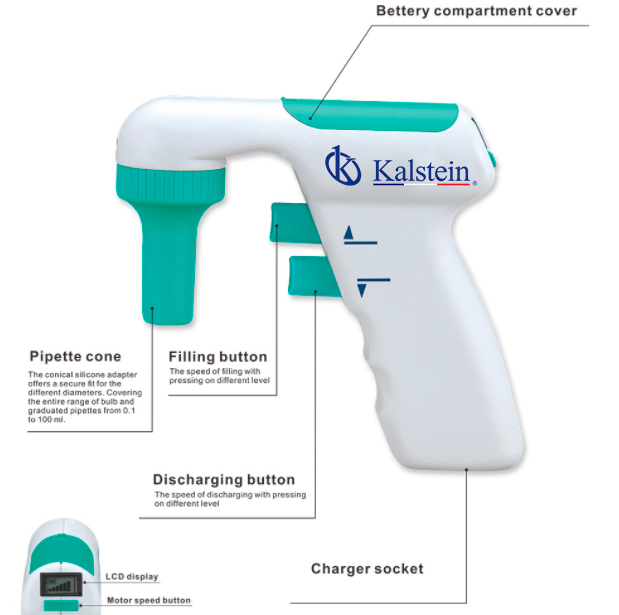A pipette is a laboratory instrument used to transport liquids from one container to another. Pipettes are made from a variety of materials, including glass, metal, plastic and porcelain. There are different types of pipettes, each designed for a specific use.
The volume that can be transported by pipette is determined by the size of the pipette and is classified according to the maximum volume that can be transported. The most common pipettes are the 1 mL, 5 mL and 10 mL pipettes, the larger pipettes are used to transport larger volumes of liquids, while the smaller pipettes are used to transport smaller volumes.
And in Kalstein we have this type of instruments suitable for use in the laboratory, have a form of increase, chemical resistance, sterilization at 121 ° C and very low operational force.
Missions of Pipettes
In the laboratory, pipettes are used to transport or extract small amounts of a substance from one container to another. They are made of glass or plastic, and are graduated to raise specific volumes of liquids. To use a pipette, the substance to be removed is placed in the first container. The liquid is then filled to the graduation mark indicating the volume to be withdrawn. Finally, close with your thumb and forefinger, and lean over the second container, where the liquid is dropped. They are very precise, and can be used to mix small amounts of liquids or to apply substances to surfaces in the laboratory.
In the laboratory, it is important to follow certain hygiene and safety standards to avoid accidents. It is important that hands are clean and dry before handling any chemicals. It is also important that containers and surfaces are clean and free of dust.
Types of Pipettes
A pipette is a tool used to accurately transfer liquids. In the laboratory, they are used to transfer small amounts of fluids, usually less than 50 milliliters. They come in different sizes and can be used to transfer liquids in a very precise way.
There are different types, and each has its own characteristics and uses. Below are some of the most common types of pipettes.
Volumetric pipettes
They are used to transfer liquids of a specific volume. They are made of glass and have a mark on the bottom of the tube indicating the volume that can be transferred. They are used to transfer liquids that must be measured accurately, such as chemical solutions.
Adjustable pipettes
Graduated pipettes are similar to volumetric pipettes, but are not as accurate, they come in different sizes and have a scale on the tube indicating the volume of liquid that can be transferred. They are used to transfer liquids that do not need to be measured accurately, such as water.
Pasteur Pipettes
Pasteur pipettes are used to transfer liquids into a flask or bottle with a lid. They come in different sizes and have a hose that connects to the lid of the bottle or flask. They are used to transfer fluids that must be kept sterile, such as culture solutions.
Transfer pipettes
Transfer pipettes are used to transfer liquids from one bottle or flask to another container. They come in different sizes and have a hose that connects to the lid of the bottle or flask. Transfer pipettes are used to transfer liquids that must be handled with care, such as chemical reagents.
Suction Pipettes
Suction pipettes are used to transfer liquids from one bottle or flask to another container. They are used to transfer liquids that must be handled with care, such as chemical reagents.
Kalstein pipettes
It is important to have equipment suitable for microbiology laboratories, and Pipettes comply with all this. At Kalstein we are manufacturers of such equipment, belong to the YR series, and have attractive features, such as:
Volume Indicator. They’re ergonomic. These models are a fixed volume air displacement pipette with the selected volume displayed on a digital display.
To learn more about our team, we invite you to take a look at our catalog from HERE
We are manufacturers and we have the best advice, so that your purchase is the ideal and at excellent prices. For more information, visit our website at HERE

